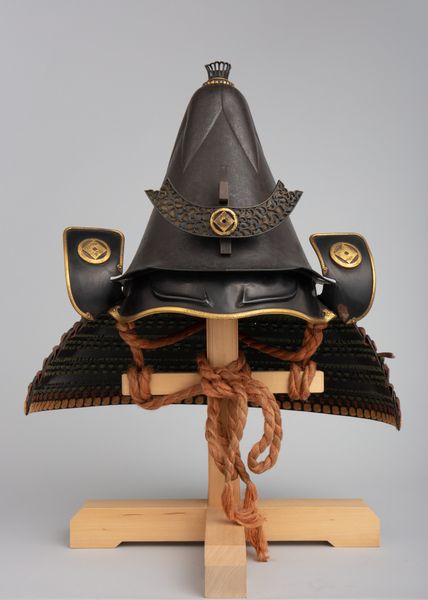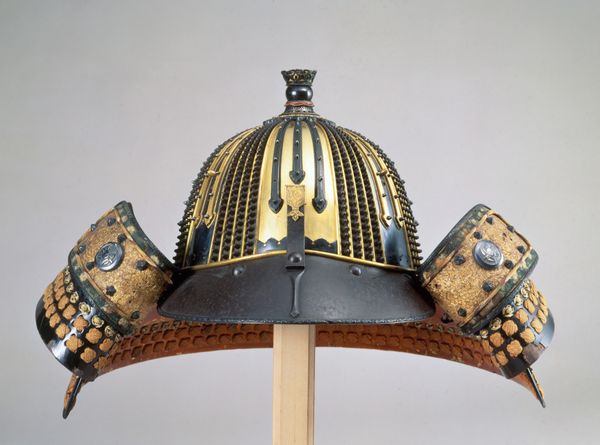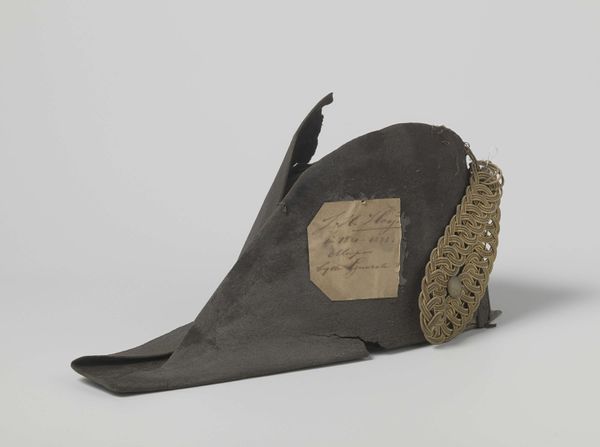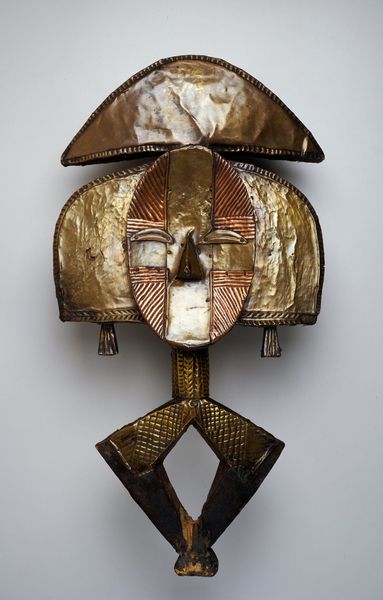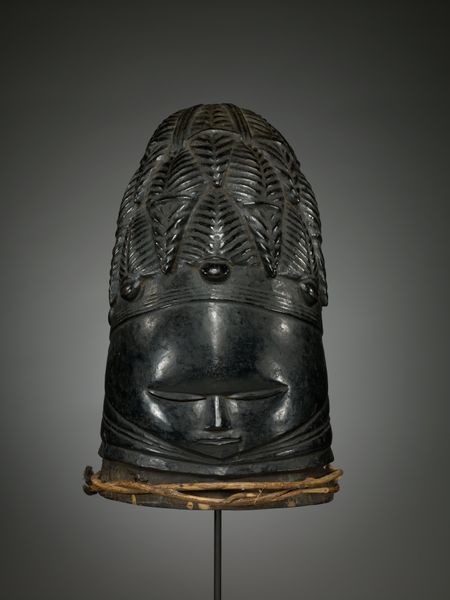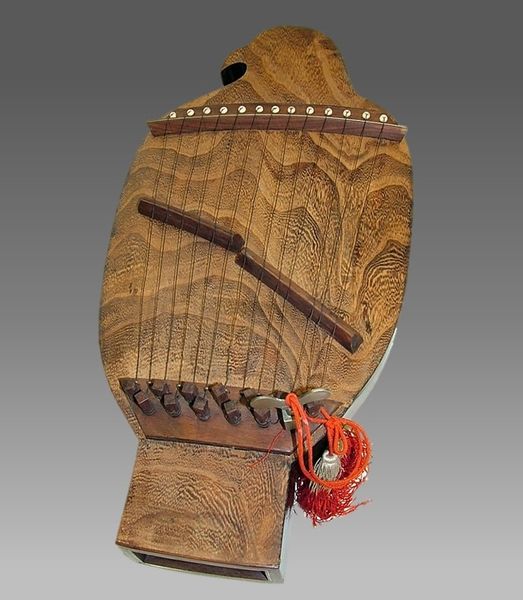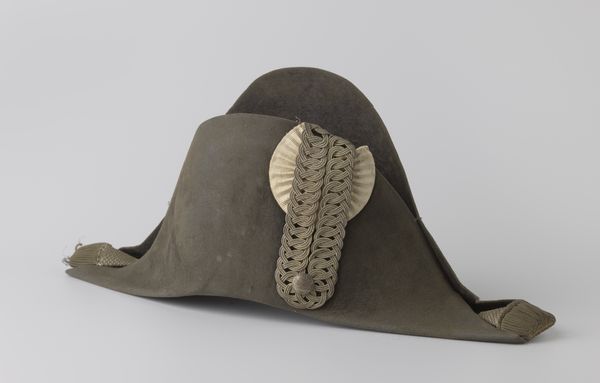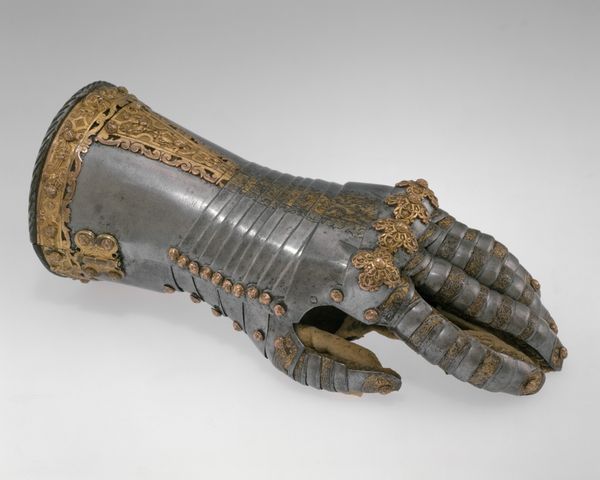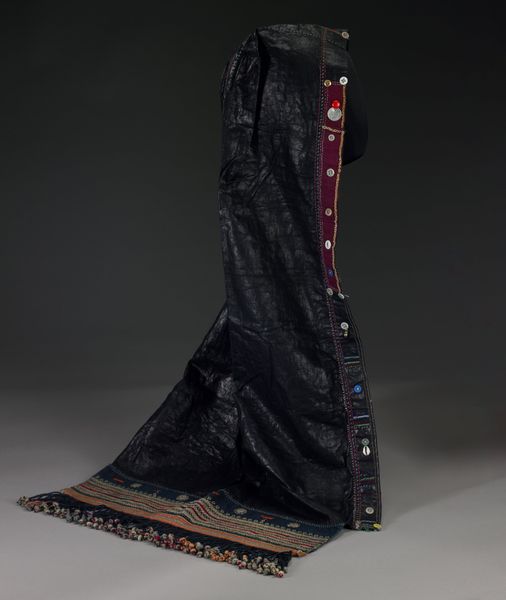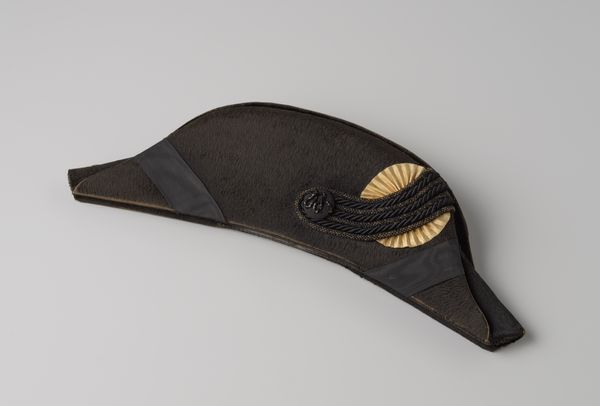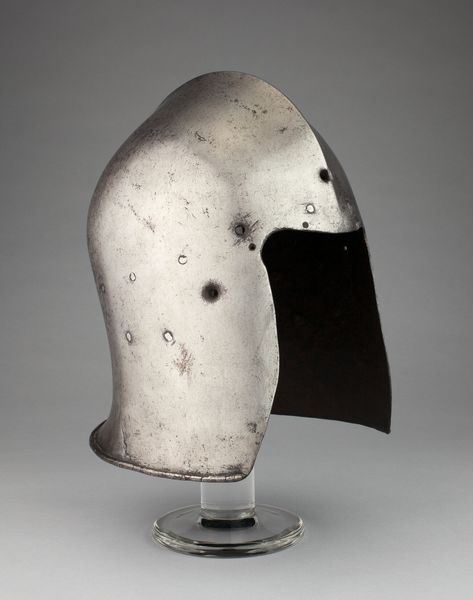
metal, sculpture
#
metal
#
sculpture
#
asian-art
#
sculpture
#
armor
Dimensions: lining: L. 12 in. (30.5 cm); W. 9 3/4 in. (24.8 cm); Wt. 0.8 oz. (21 g); trousers (r): H. 24 in. (61 cm); W. 23 in. (58.4 cm); Wt. 11.7 oz. (332 g)
Copyright: Public Domain
Editor: Here we have a suit of Armor, a Gusoku, crafted sometime between 1800 and 1875. It is currently held at the Metropolitan Museum of Art and created by Saotome Ietada. What strikes me immediately is the elaborate craftsmanship... so much detail! What do you see when you look at this piece? Curator: Beyond the craftsmanship, I see a potent symbol of power, status, and the deeply ingrained social structures of feudal Japan. Who was deemed worthy of such armor? Consider the complex intersection of warrior culture, the samurai class, and their role in maintaining societal hierarchy. This isn’t just protection; it’s a visual declaration. Editor: A declaration of societal position? So the craftsmanship is almost secondary to its function as a… billboard, I guess? Curator: Precisely. And consider the details: the metalwork, the decorative elements – what stories do these tell? Were they family crests? Symbolic animals or figures? What philosophical beliefs about power, death, or honor might be interwoven here? Editor: It’s a little hard to tell from here. But those curved elements near the ears – the shiny golden metal - they look important. Curator: Indeed. We might consider the warrior's sense of self. How did this armor, a second skin, shape his identity and behavior within that rigid social order? Did it empower him or constrain him? Editor: I see what you mean. So it's less about aesthetic value, and more about understanding what this object *did* in its own time. Curator: It is always both! Consider also the gender dynamics at play. Whose stories are erased when we only examine the armor, the weaponry of war, and not the domestic space where women lived. How does this skew our historical understanding? Editor: I hadn’t thought about it that way before. It definitely reframes it for me! Thank you.
Comments
No comments
Be the first to comment and join the conversation on the ultimate creative platform.
